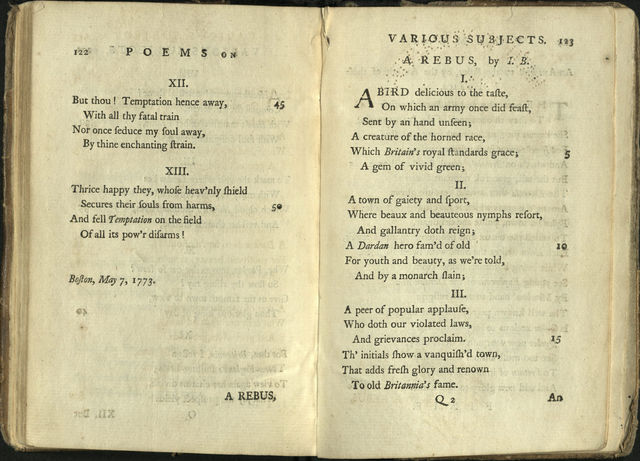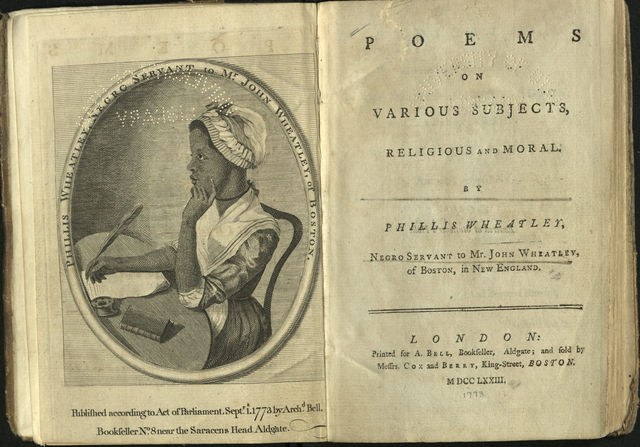The small, well-used and weather-stained book doesn’t initially seem very important.
Then the librarian places it gently on the gray foam book cradle and you see that it is a first-edition copy of Poems on Various Subjects Religious and Moral, a poetry collection by Phillis Wheatley, the first published black author in America. The same phenomenon happens with Special Collections’ copy of Langston Hughes’ Field of Wonder: It seems unremarkable until you open it up and see that in 1947 he wrote “For Maurice — With greetings from this Georgia Wonderland, Sincerely, Langston,” on the inside cover.
These works, in addition to many others, comprise the small but growing collection of works by black poets from America and beyond in the Marriott Library’s Special Collections. While Alison Conner, an assistant librarian, said there is definitely room for improvement, they have the start of a unique group of materials that all students at the U can come and enjoy.
All of these authors’ works are readily available online or in stores. However Lyuba Basin, an associate curator in Rare Books, said the campus’ collection gives students a chance to see these texts in their original state.
“I think seeing first editions especially, and seeing them in the way that they would have come out is really powerful because then you kind of get to experience it in the way similar to someone would during that time,” Basin said.

Conner said these are works of international and national importance and are complementary to the library’s more personal collections. For example, their collection of oral histories, which include those of Utah’s black population, can personalize history and draw links between local individuals and those from national locations.
“When you can get a collection together of printed material, people like Maya Angelou that people identify with, but also have those personal stories, then you’re really serving a community in a very diverse way, a very broad way,” Conner said.
Not only are these works internationally important and intertwined with the story of black communities in Utah, Conner said each has their history as objects individually. For instance, she said, the library’s copy of Wheatley’s book, which has weather-stained pages, bent corners, light pencil markings and two very full check out cards in the back, places the reader in direct connection with those who have picked up the book before them.
“When you have a copy that has someone’s underlining, or someone’s pencil marks, that means that was personally owned by someone,” Conner said. “You can see what were the things that are important to them; are they the same as what was important to me, do I also like that passage that they underlined? I think it’s a way for us to take an object and learn from it more than what the words say.”
Again, Conner said that they’re proud of the fact the library has the beginnings of a rich collection, but that it could be improved.
There are people working within the library to bring attention to the importance of finding and preserving texts from a diverse background, Conner said. There are also staff within the department, such as the diversity librarian, working to find the specific areas the library could improve upon.
Basin said she also thinks the library’s collection of works by black authors could do better, but that the acquisitions of these materials depends on student and faculty needs.
“We get the books that we do based on talking to the departments and seeing what kind of materials that they want to get,” Basin said. “So it’s something that needs to be a university conversation.”
All of the works located in Special Collections are open to the public and people can access this material by visiting their reading room on the fourth floor of the Marriott Library.
k.ehmann@dailyutahchronicle.com
@Ehmannky


